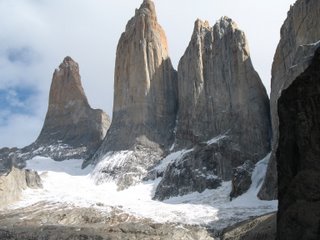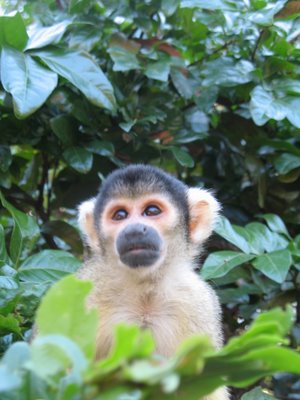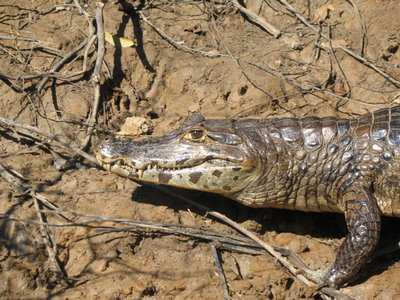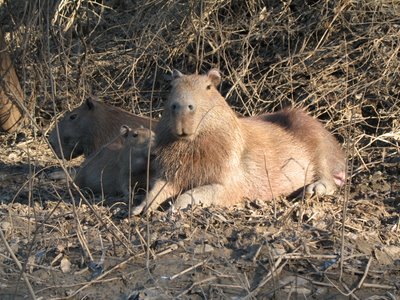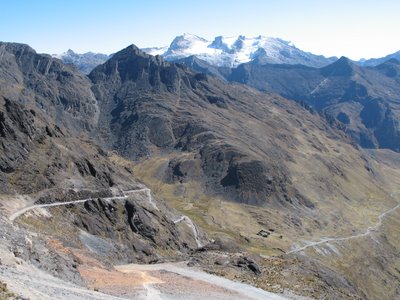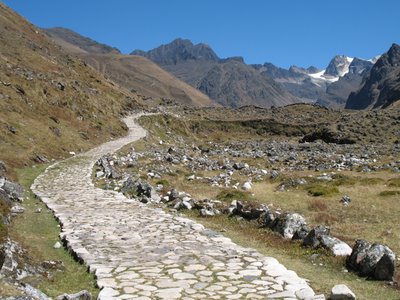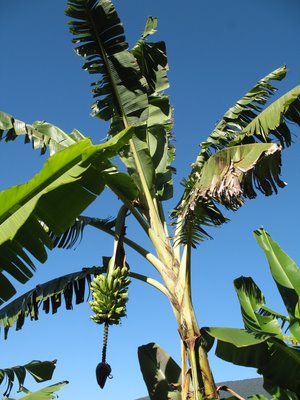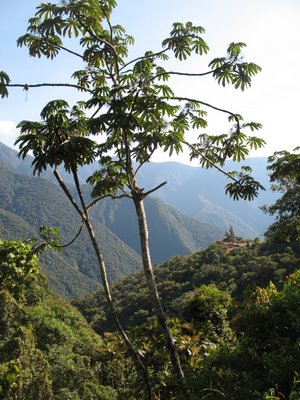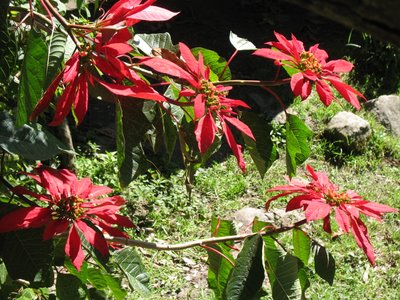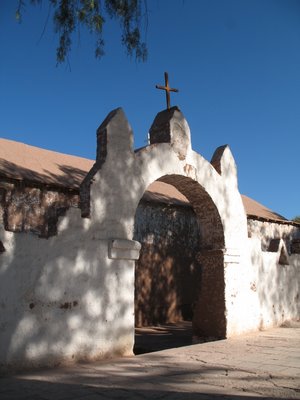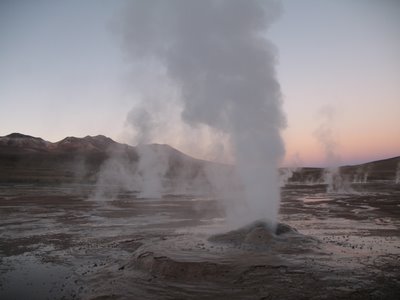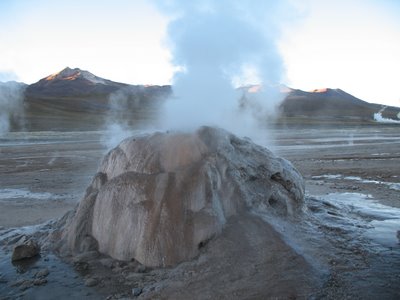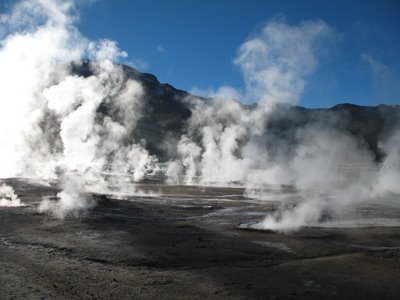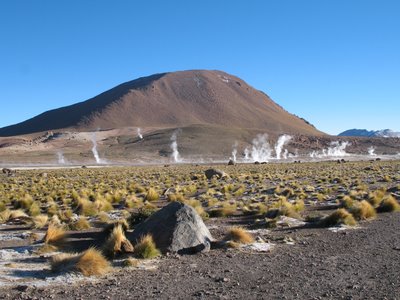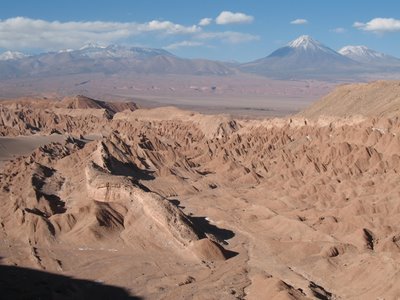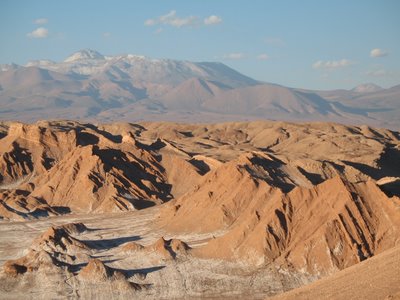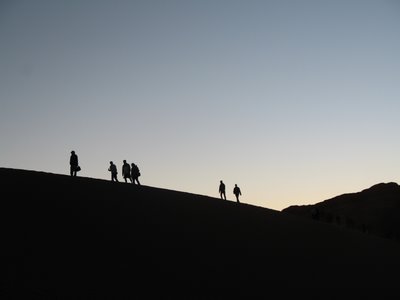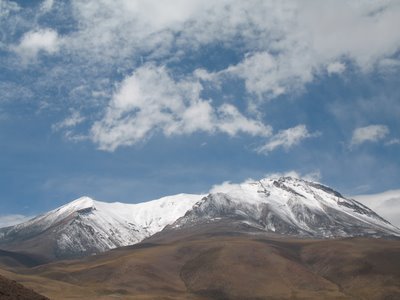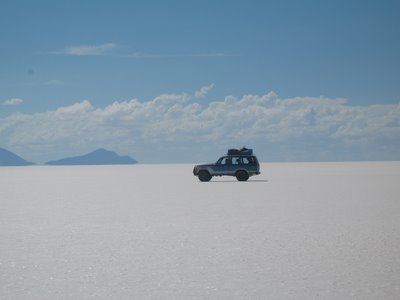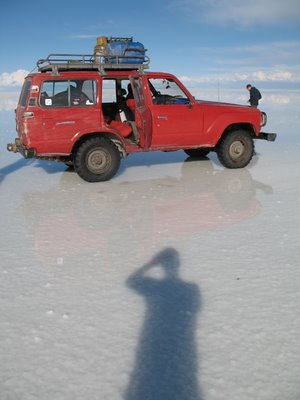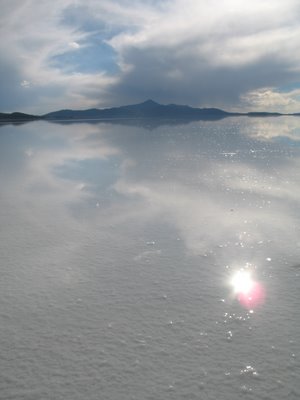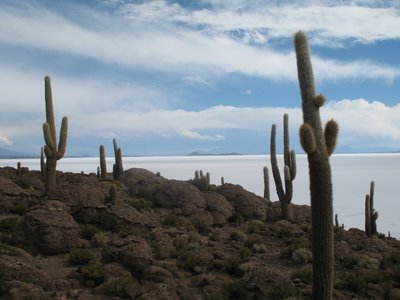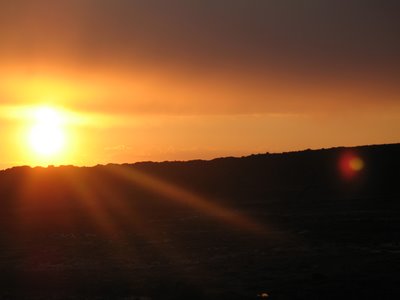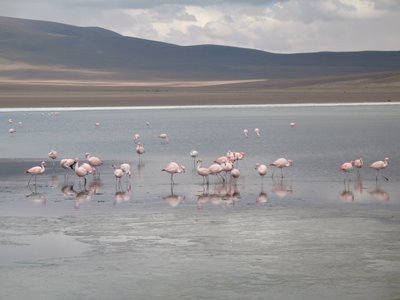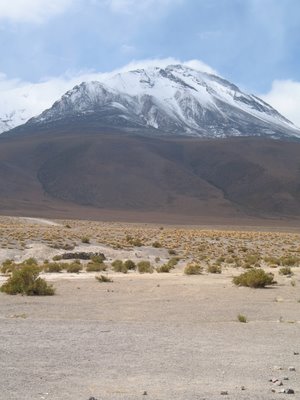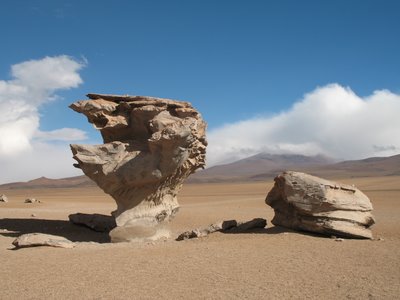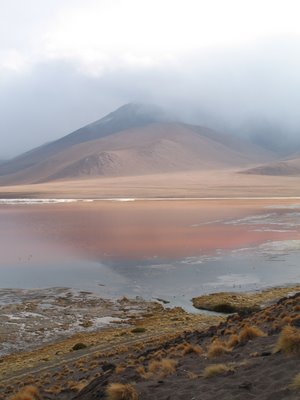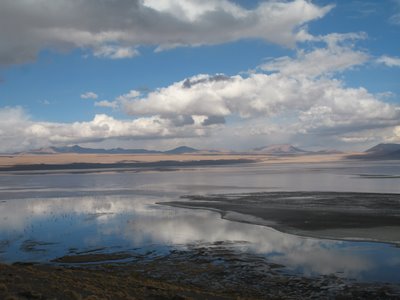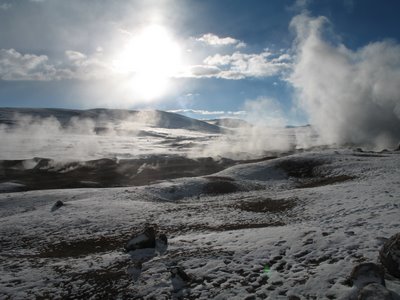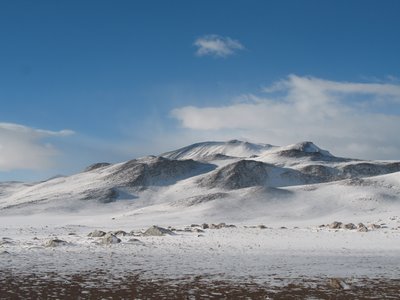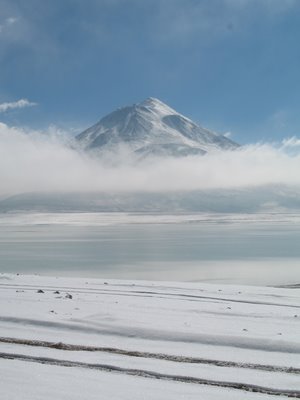La Paz - The Worlds Highest Capital CityBolivia´s capital is quite a fun place to wander around - streets twist up the steep-sided valleys packed with uniform concrete houses, every so often you catch a glimpse of the triple peak of Illimani or the steep cone of Huayni Potosi, a popular montaineering challenge at just over 6,000m. The street scene here is quite lively - bowler hatted cholas wander the streets, baraclava-masked shoe shine boys ply their trade in the cities plazas while the streets uphill from Plaza San Francisco form the travellers ghetto, a dense network of artenesia shops and cafes which intersects the witches market, where locals go to buy herbs, potions and good luck charms. The city´s main street, where the North American influence seems to be quietly taking over, runs downhill towards the richer parts of town. Its a pleasant walk down to Sopacachi, where most of the finest bars and restaurants are located. The main square, Plaza Murillo houses the cathedral, the presidential palace next door and Congress just round the corner. Its been the nerve centre of many a Bolivian coup and the plaza of choice to hang former disgraced presidents.
La Paz is full of lots of small and interesting museums. My favourite is the Coca Museum, which explores the coca leafs fascinating and controversial history, from its use by the native Andean people to the extraction of cocaine and its modern day uses and abuses via coca cola and everything inbetween. Chewing coca leaves is a popular Andean habit, especially among the poorer masses and increases tolerance to heavy workloads (as such is popular with miners and farm workers) whilst producing a detached mild euphoria. Bolivia´s current president Evo Morales was himself a coca farmer turned union leader and he has pushed for the leaf to be decriminalised whilst attempting to crack down hard on those who extract and traffic cocaine. Bolivia´s main coca growing area, the Chapare, is the focus of US crop eradication programmes, whilst that grown in the yungas region is grown on a smaller scale and consumed locally by coca chewers (its also a slightly different crop). Coca no es cocaina, as they say in Bolivia.
I spent a few days here getting used the altitude again and planning my next move. I have decided to first trek down into the lush fertile yungas region, following an old inca trading route, the el choro trail, now used mainly by trekkers. After that I would have to return to La Paz to get a flight to Rurranabaque and further into the Bolivian rainforest. I also like the sound of visiting another mountain area in order to do some more high trekking.

